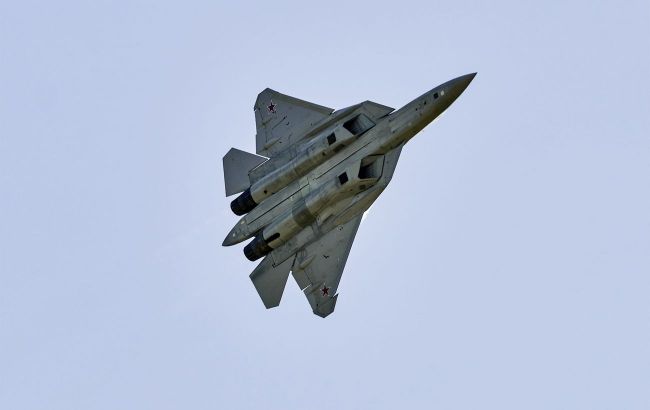Russia suspends Su-57 fighter jets production: Reason named
 Russian Su-57 Felon aircraft (Getty Images)
Russian Su-57 Felon aircraft (Getty Images)
Russia has suspended production of Su-57 Felon fighter jets, with Western sanctions being the primary reason, despite Russia's attempts to circumvent them, citing The Telegraph.
"It’s clear that Russia’s military industry heavily depends on Western components, particularly in electronics," explained the Ukrainian analytical group Frontelligence Insight.
According to the report, sanctions imposed by the West have throttled the supply of this critical hardware, placing the production of the Su-57 at risk, Frontelligence Insight concluded.
After reviewing Russian documents, Frontelligence Insight identified several key bottlenecks, including the WA36 attenuator (an electronic device that reduces signal amplitude or power without significantly distorting its shape, - ed.) and power supplies. These components are part of the MPPU-50, a German device used to calibrate the communication system of the Su-57.
Previously, Sukhoi could legally import the MPPU-50 and its parts, but now they are forced to illegally acquire them from third-party sources.
"Considering that Russian military production continued to expand in 2023 and 2024, it’s clear that they find ways to smuggle key components or purchase Chinese replacements to maintain production," Frontelligence Insight said.
However, illegal imports require time, effort, and money, which has slowed the pace of new Su-57 production and likely increased the cost of the aircraft.
"In addition, the MiG-35 has become more economical, which is also of great importance," a source from The Telegraph added.
Arguments against the Su-57 and the revival of older, simpler jet types are "growing stronger now, as Russian industry struggles to source critical foreign components."
Decline in Su-57 deliveries
According to the authors of the article, Russia has just over 30 Su-57s in service, a third of which are test models, potentially missing some planned electronics. This is "a paltry force for an air arm that deploys around a thousand front-line fighters – and which has lost a hundred of them in action over Ukraine since February 2022."
"Strikingly, the delivery rate for new Su-57s seems to have dropped – a lot – between 2023 and 2024. Normally, delivery rates for new fighter types increase year on year for a given multi-year order, as workers gain experience and economies of scale kick in," the report says.
Journalists emphasize that the Su-57 is an exception to this rule.
"It’s apparent that, with targeted sanctions, the United States and its allies have blunted the Russian air force’s modernization," the article concludes.
About Su-57
The Su-57 made its first flight in 2010. Over the following decade, employees of the manufacturer, Sukhoi, hand-built 10 test models. In 2019, the Kremlin signed a contract for 76 serial production jets, reportedly at around $50 million each.
The Russian firm Sukhoid delivered the first 10 serial Su-57s to the Russian Air Force in 2022, and 11 more in 2023. Only a few additional jets were delivered in 2024.
Russia's losses of Su-57s
At the same time, Russia's air force lost two Su-57s — one test model and one serial production model — in crashes.
Additionally, a strike on the Russian airfield Akhtubinsk destroyed at least one Su-57 in June.

